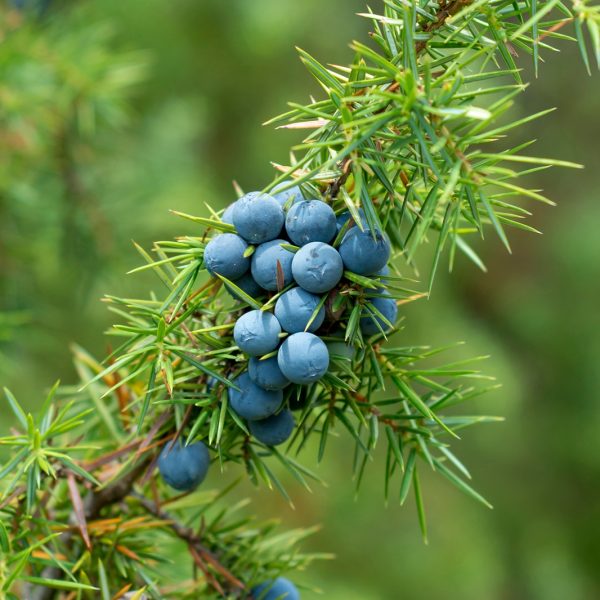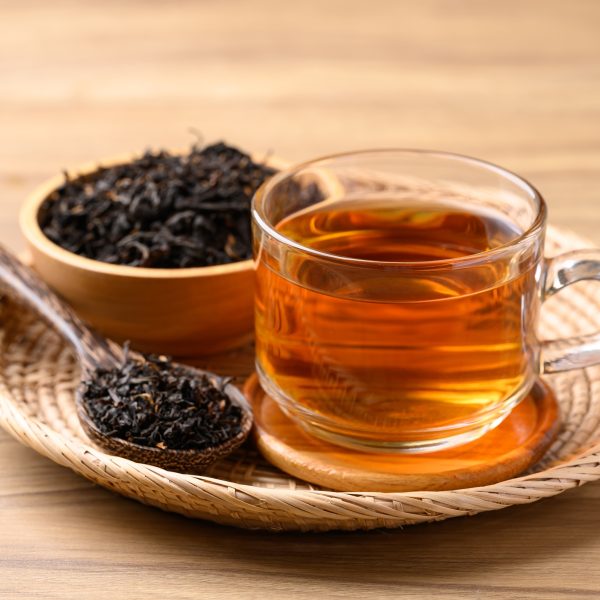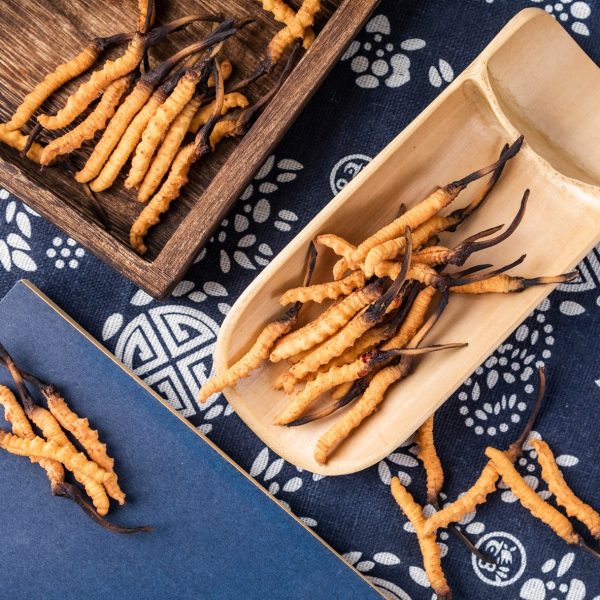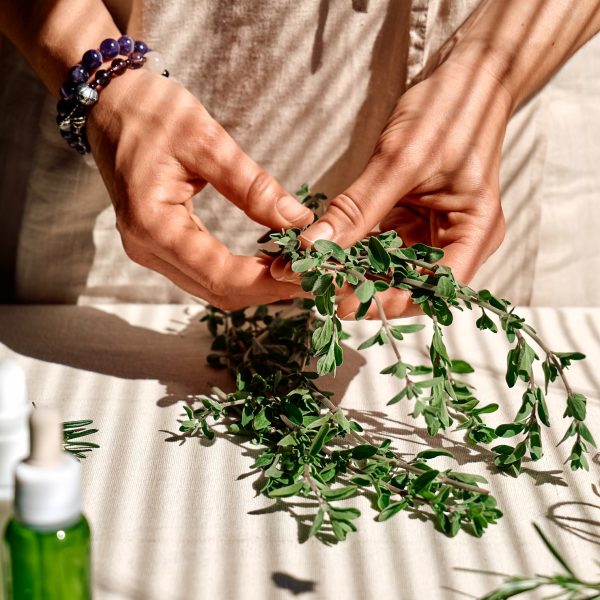-
How does it feel?
Elderflowers have a beautiful and unique aromatic quality. Its creamy white fragrant blossoms are sweet, cooling and mildly bitter to taste. The aromatic oils in elderflower are well preserved as a dried herb and also preserve well in cordial and tincture. The fresh tea has a fresh aromatic flavor with an additional mild pungency.
-
What can I use it for?
Elderflower is a herb that one should always have in a home herbal first aid kit. This delicate flower is both powerfully anti-catarrhal and anti-inflammatory, making it the perfect for treatment of the common cold or influenza.
By the same means, elderflower is excellent for allergic conditions that cause excess catarrh in the upper respiratory tract, it can be helpful for symptoms of hay fever such as itchy eyes and sneezing.
Safe for all the family, elderflower has a definite affinity for children who are prone to perpetual coughs, colds, runny noses and tonsillitis, although dietary factors should also be considered as possible causes of such condition.
-
Into the heart of elderflower
 Not only can Elderflower be used in acute and first aid situations as discussed above, but elderflower also has a gently relaxant effect which may be applied for those experiencing nightmares and disturbed sleep, useful for both adults and children.
Not only can Elderflower be used in acute and first aid situations as discussed above, but elderflower also has a gently relaxant effect which may be applied for those experiencing nightmares and disturbed sleep, useful for both adults and children.Described by Brooke (2018), as a herb that increases sweating, elderflower can also aid the skin, helping to clear the pores by removing impurities. For this, a hot infusion is most often given for the diaphoretic (sweat inducing) action. Congruently, Grieve (1984) refers to the use of elderflower as an infusion used on the skin, explaining that it can improve the complexion and brighten the skin.
Energetically, in terms of Western Herbal Medicine, Elderflower is hot and dry, however, when drank as a hot tea for increasing the output of fluid by sweating, elderflower exhibits a cooling effect. An example of how different preparations of a herb can display varied actions. Either as a result of how the compounds interact with the extraction method, the deliverance of the compounds by the predation type mixed with the energetic characteristics of the preparation itself.
In Ayurvedic view, elderflowers are referred to as being bitter, pungent and cooling, reducing kapha and pita and having a neutral or mixed effect in vata. It seems again that alternative narratives to this plant’s energetic actions are held by the different energetic systems in Herbal Medicine. Most unanimous is that this plant has an overall cooling effect, rather than directly heating.
-
Traditional uses
 In The Modern Herbal, Mrs Grieve explains that Elderflower was used in inflammatory diseases of the lungs, including pleurisy. Also specific for use in viral diseases of the same inflammatory nature such as measles and scarlet fever.
In The Modern Herbal, Mrs Grieve explains that Elderflower was used in inflammatory diseases of the lungs, including pleurisy. Also specific for use in viral diseases of the same inflammatory nature such as measles and scarlet fever.The tea of Elderflower is said to promote expectoration, increasing the flushing of fluid via perspiration, which is a useful mechanism for the treatment of fevers. By increasing sweating, heat is released from the body, essentially a cooling and detoxifying process that helps move viral matter through our system.
Elderflower has a long standing place in the British Herbal Pharmacopoeia for treatment of the common cold and influenza, particularly in the early stages of infection. Traditionally also thought to be useful for inflammation of the eyes and skin. With Mrs Grieve also adding that as a lotion or distilled water, elderflower has tonifying effect on the skin, improving complexion, treating blemishes and mild
-
Traditional actions
Herbal actions describe therapeutic changes that occur in the body in response to taking a herb. These actions are used to express how a herb physiologically influences cells, tissues, organs or systems. Clinical observations are traditionally what have defined these actions: an increase in urine output, diuretic; improved wound healing, vulnerary; or a reduction in fever, antipyretic. These descriptors too have become a means to group herbs by their effects on the body — herbs with a nervine action have become the nervines, herbs with a bitter action are the bitters. Recognising herbs as members of these groups provides a preliminary familiarity with their mechanisms from which to then develop an understanding of their affinities and nuance and discern their clinical significance.
-
Traditional energetic actions
Herbal energetics are the descriptions Herbalists have given to plants, mushrooms, lichens, foods, and some minerals based on the direct experience of how they taste, feel, and work in the body. All traditional health systems use these principles to explain how the environment we live in and absorb, impacts our health. Find out more about traditional energetic actions in our article “An introduction to herbal energetics“.
Western energetics
-
What practitioners say
 Respiratory system
Respiratory systemElderflower is particularly useful for influenza or the common cold. Indicated for all manner of catarrhal inflammations in the upper respiratory tract, this would include viral and allergic conditions, such as sinusitis, tonsillitis and hay fever. Elderflowers can also be used where there is congestion in the inner ear.
Immune system
Elderflower is great for the management of fevers. As opposed to the orthodox approach of treating fevers which is to reduce temperature/ symptoms, the herbal / holistic approach is rather to support and moderate this important immunological process, with a view to improving overall recovery outcomes. Fevers are the bodies natural response to pathogens (viral/ bacterial). In basic terms, the rise in blood temperature during a fever, is the body’s attempt to create an inhospitable environment for pathogens to survive.
Sweating also increases during a fever to further improve elimination from the blood whilst also diffusing and heat. At the point where we start to sweat during a fever, our body is doing incredible work to fight off the bacteria or virus. Elderflower directly supports these processes through its anti-inflammatory and diaphoretic actions.
Peppermint and yarrow are often combined with elderflower to support through influenza and the common cold, particularly through the fever stage.
Please note: Fevers can be a sign of serious health conditions that need immediate medical attention, if the cause of fever is not identified as being of the acute viral nature (common cold/ influenza). One must be sure to seek professional advice where symptoms do not improve in any circumstance.
Eliminatory system
Through its diaphoretic action elderflower can support detoxification through the skin, therefore as an adjunctive to work alongside herbs that improve hormonal balance and increase the lymphatic detoxification. Elderflower may therefore be useful as part of an approach for skin conditions and overall movement of body fluids.
Circulatory system
Elderflower may also be useful for oedema and other congestive conditions of the circulatory system, by its ability to increase the output of fluid. Elderflower is described as a peripheral vasodilator, meaning that it increases dilation in the peripheral capillaries, which may be useful where there is poor circulation to the extremities (hands and feet).
-
Research
 Much of the research available into the immunological effects of Elder, focuses on the elderberry. However an in vitro study on both extracts of Elderberry and Elderflower constituents exhibited promising inflammatory modulating activity. It must be noted though that unfortunately clinical trials are lacking for elderflower.
Much of the research available into the immunological effects of Elder, focuses on the elderberry. However an in vitro study on both extracts of Elderberry and Elderflower constituents exhibited promising inflammatory modulating activity. It must be noted though that unfortunately clinical trials are lacking for elderflower.A specific group of compounds called phenolic compounds, isolated in elderflower are found to be highly antioxidant in a review carried out in 2015, the action of these antioxidants is to protect against cellular damage from free radicals, whilst improving cellular health and function.
An in vitro study investigating the action of peptic polysaccharides in extracts of elderflower, found positive outcomes for enhancing cellular immunity, supporting to the well documented belief that elderflower is a valuable medicine for the treatment of acute viral infections.
Another in vitro stem cell study was carried out into the effects of elderflowers potential neuroprotective benefits, the study provided insights into the mechanisms by which elderflower extract could suppress neurotoxicity elicited by environmental and genetic stressors.
-
Did you know?
The Elder was one of the sacred trees of the Celts, so named Ruis the Elder, the tree of the thirteenth lunar month. There are many folkloric tales of the Elder, which grows natively all over Europe.
Additional information
-
Safety
Elderflower may lower blood sugar levels, therefore precaution must be taken in diabetes, or where taking anti-diabetic medications.
Precaution must also be taken as elderflower may interfere with blood sugar control during and after surgery.
-
Dosage
Tincture (1:5 in 40%) take 2-4ml three times a day.
-
Constituents
- Flavonoids: primarily flavonols, rutin and isoquercitrin
- Mucilaginous polysaccharides
- Tannins
- Phenolic acids
- Volatile oil
- Triterpenes
- Potassium





























 Not only can Elderflower be used in acute and first aid situations as discussed above, but elderflower also has a gently relaxant effect which may be applied for those experiencing nightmares and disturbed sleep, useful for both adults and children.
Not only can Elderflower be used in acute and first aid situations as discussed above, but elderflower also has a gently relaxant effect which may be applied for those experiencing nightmares and disturbed sleep, useful for both adults and children. In The Modern Herbal, Mrs Grieve explains that Elderflower was used in inflammatory diseases of the lungs, including pleurisy. Also specific for use in viral diseases of the same inflammatory nature such as measles and scarlet fever.
In The Modern Herbal, Mrs Grieve explains that Elderflower was used in inflammatory diseases of the lungs, including pleurisy. Also specific for use in viral diseases of the same inflammatory nature such as measles and scarlet fever. Respiratory system
Respiratory system Much of the research available into the immunological effects of Elder, focuses on the elderberry. However an in vitro study on both extracts of Elderberry and Elderflower constituents exhibited promising inflammatory modulating activity. It must be noted though that unfortunately clinical trials are lacking for elderflower.
Much of the research available into the immunological effects of Elder, focuses on the elderberry. However an in vitro study on both extracts of Elderberry and Elderflower constituents exhibited promising inflammatory modulating activity. It must be noted though that unfortunately clinical trials are lacking for elderflower.





